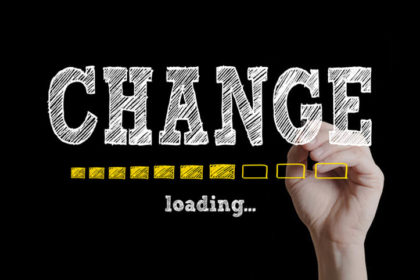Interviews can seem intimidating, especially if you are interviewing for your first job. Where do you even start? We really want you to land that job, so we are here to help. We’re breaking this down into four parts: First Impressions, The Company, Nonverbal Communication and The Follow-Up.
Part 1: First Impressions
The Outfit
First things first, figure out what you are going to wear. Every industry is different. If you are going to interview for a retail job, you most likely don’t have to wear a suit and tie, but you should put one on if you are applying for a job as an accountant. Look at the companies in Silicon Valley; instead of suit jackets, they are wearing hoodies.
Here are four steps to get that outfit right:
Step One: Do the homework
Figure out the industry standard, and more specifically, the culture of the company.
Step Two: Overdress
It’s always better to be overdressed than underdressed. The last thing you want to do is wear a hoodie to a job interview for a company that has a more business-oriented dress code.
Step Three: Details, details, details
You want to look polished. Make sure your shirt isn’t wrinkled. Or that there isn’t a stain on your pants. You are trying to present yourself in a neat and orderly fashion, and that starts with your clothes.
Step Four: Try it on
The day before, you should try on the outfit you picked for the interview. This goes back to details. Make sure that everything still fits or that your go-to shirt isn’t missing a button. It gives you a chance to come up with a Plan B.
The Hello
Now that we have figured out what you are going to wear let’s talk about first impressions. First impressions are everything. They can make or break you. Smile. Be confident, but not arrogant. Make sure that your handshake is firm. Don’t pancake or death grip the handshake.
The Interview
First things first. Know your resume inside and out. Have specific and compelling stories or examples ready. Be ready to show the accomplishments that you have achieved. Make sure they are measurable or concrete.
Stay away from corny along the lines of “I have become more patient ever since I started working in customer service.” Instead, shine a light on your awesomeness by talking yourself up (remember to stay confident and not arrogant). Try and remember when you saw a problem, came up with a gameplan to solve it and executed it.
Employers like to see measurable improvement. Intangibles are great, but they won’t get you a job.
One last tip, practice these stories so you aren’t fumbling over words. Just don’t sound like a robot.
One of the things employers will ask during an interview is to “tell me about yourself.” Here is where your ‘Elevator Pitch’ comes in. Most interviews start with this simple question. They don’t want a dissertation about you. A good elevator pitch answer three basic questions:
- Who are you?
- What do you do?
- What it is you want? (end this with a call to action)
While it can be frustrating to write an elevator pitch, having one ready for a job interview will make you look all that much better.
On top of having an elevator pitch ready, you should also have some answers prepared for the other basic questions. Think these through and have some go-to answers ready.Tell me about yourself. (Elevator Pitch)
- What are your strengths?
- What are your weaknesses?
- Why do you want this job?
- Where would you like to be in your career five years from now?
- What’s your ideal company?
- What attracted you to this company?
- Why should we hire you?
- What did you like least about your last job?
- When were you most satisfied in your job?
- What can you do for us that other candidates can’t?
- What were the responsibilities of your last position?
- Why are you leaving your present job?
- What do you know about this industry?
- What do you know about our company?
- Are you willing to relocate?
- Do you have any questions for me?
Part 2: The Company
For the interview, research the company. Who is it that might be potentially hiring you? If you go into your interview knowing a little about who the companies are then your answers to some questions will be more informed and polished. Some of the answers can be geared towards something that might be relevant to the company. But how do you go about researching them?
- Visit the company website. Sometimes a website can be out of date, but it still gives you a peek into how the company is presenting itself to the world.
- Google them. Have they had any recent news about them published? Read up on them. Get informed on the news cycle about the company.
- Scroll through their social media. While visiting their website shows you how they are presenting themselves, and googling them is catching up on the news, browsing their social media will give you the chance to get a look into their mindset. What are they tweeting out? Do they have an Instagram? How about their Linkedin? What are their followers saying about them?
- Look up their competitors. What is the company doing differently to everyone else in the industry?
After all the reading and researching, think about it. What did you learn? Write down the biggest points and study them. From these points, come up with a few (1–2) questions that you can ask the interviewer about the company at the end of the interview.
Part 3: Nonverbal
Body language is key. You need to be confident in yourself and confident in your abilities; otherwise, why would someone hire you? This is where your intangibles shine. But if you aren’t sure what I mean by nonverbal here are a few things to be mindful of:
- Posture – Make sure you are seated in the chair properly with you back straight.
- Eye contact – Look the interviewer in the eyes. Be confident when answering their questions.
- Be engaging – Speak up. Interviews can be nerve-wracking which can turn us a little timid. So make sure you aren’t mumbling
At the end of the day, the key to nonverbal is to just be confident. Fake it till you make it. What’s the worst thing that can happen? You don’t get the job? That’s part of job hunting. You aren’t going to get every job you interview for but, at least you tried.
Part 4: The Follow-Up
So, the interview is over, what do you do after? How do you follow up on the interview? Should you do anything after the interview? Yes, you should.
- The Thank You – Send a ‘thank you’ email within 24 hours of the interview. This is also the chance to respond to a question in the interview where you drew a blank.
- Waiting Around – Most of the time, the post-interview the interviewer will usually give you a way to follow-up with them. If they tell you to call at a set time and they don’t pick up; leave a message. But, don’t call more than twice. No need to be a stalker.
- Rejection – Getting told no can hurt, but stay in touch regardless. Worst case scenario, you now have a new professional contact. Best case, you might hear from them later on about a new position. Rejection might not be the best case scenario, but you just need to make the best out of a bad situation.
Interviews are intimidating, especially for those of us who, up until now, have never experienced them. I’m not going to lie, the first few might not go as planned. you might go in the most nervous you have ever been. You might leave face-palming at how dumb some of your answers were. But don’t give up. No’s can be a good thing. Learn from every mistake and every no. Practice does make perfect, so when the job you want becomes open, you are ready for anything they might throw at you. So keep at it. It’s a grind, but nothing in life worth having is easy.
What are your tips for landing a job?
Check out these additional tips for nailing a virtual interview.





[…] the Virtual Interview Resume Writing Landing the Job […]